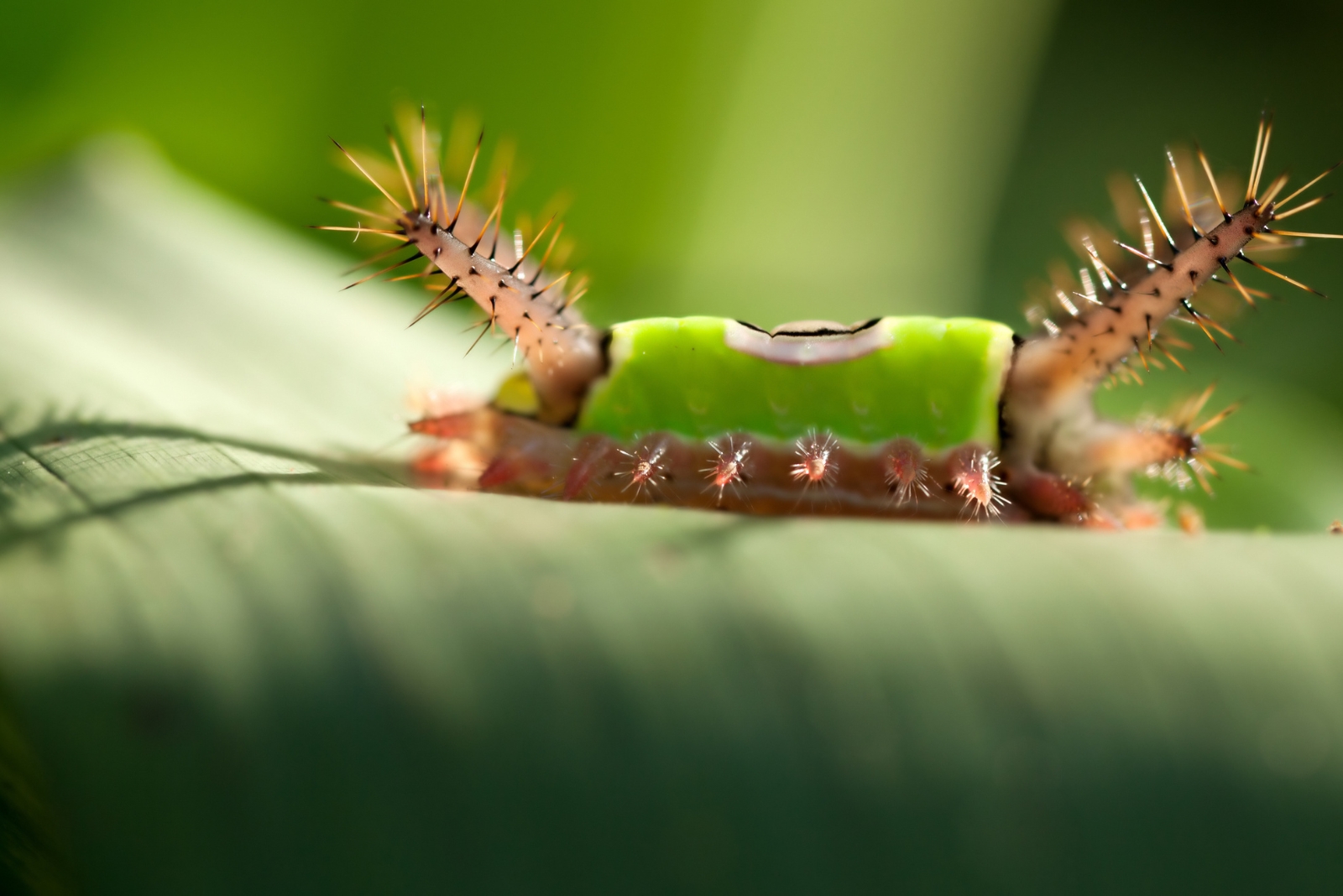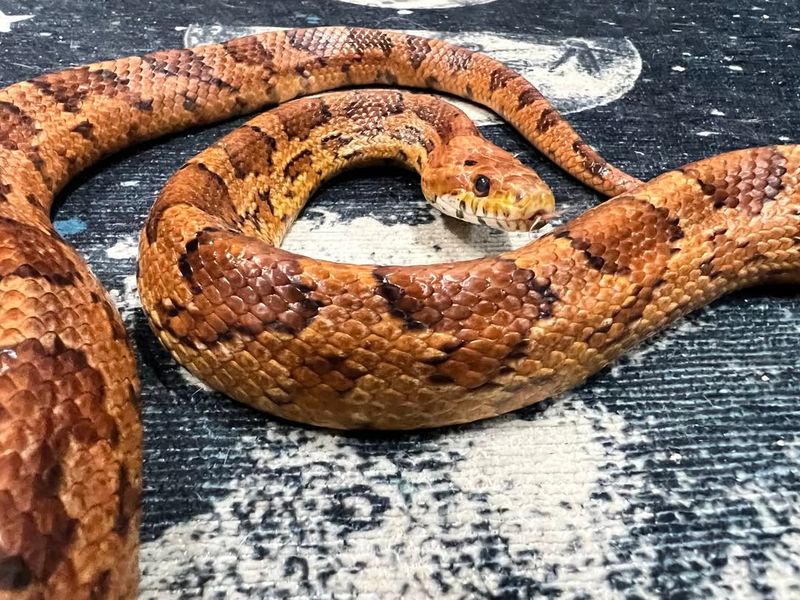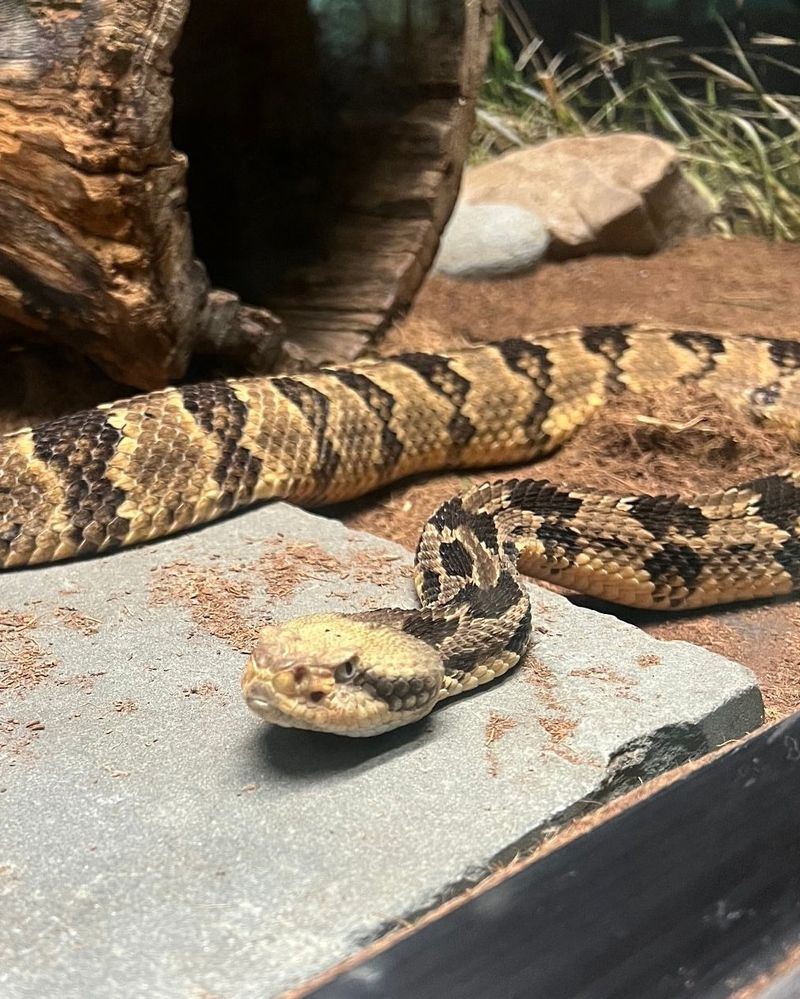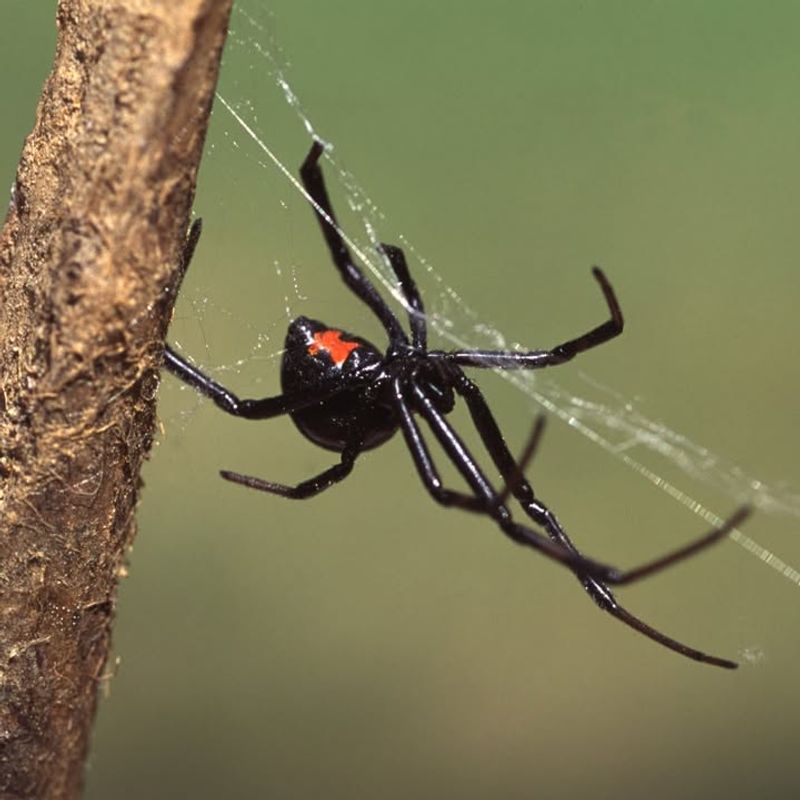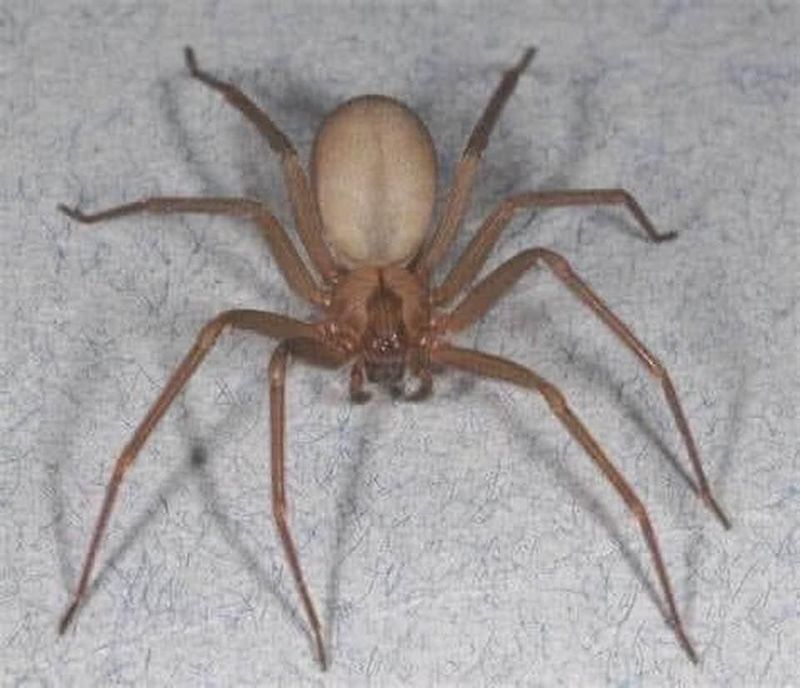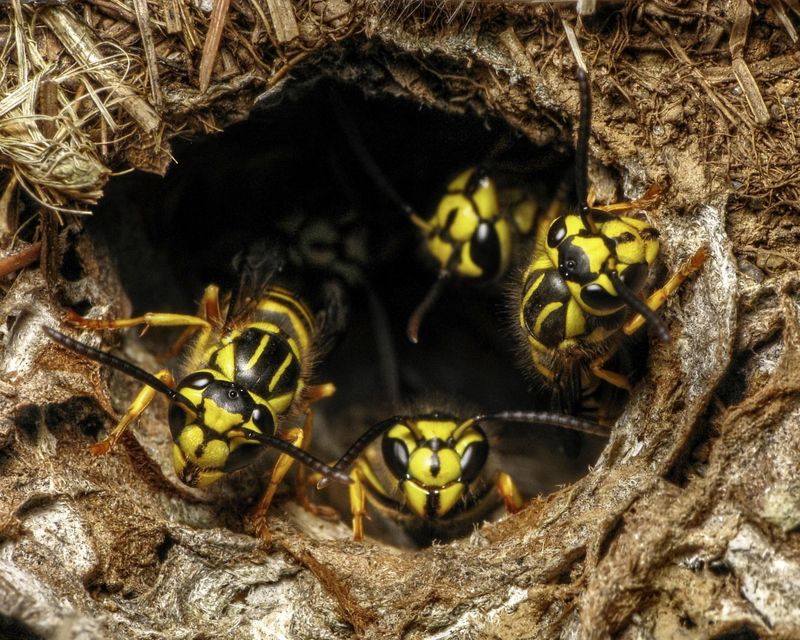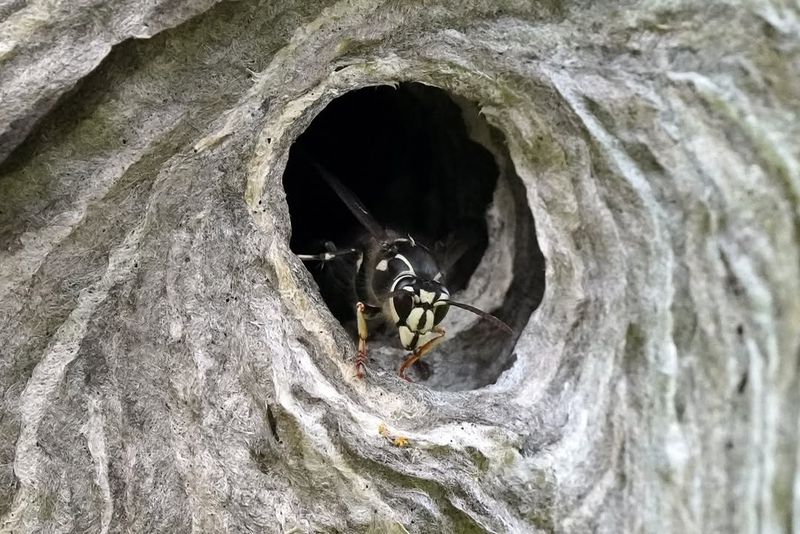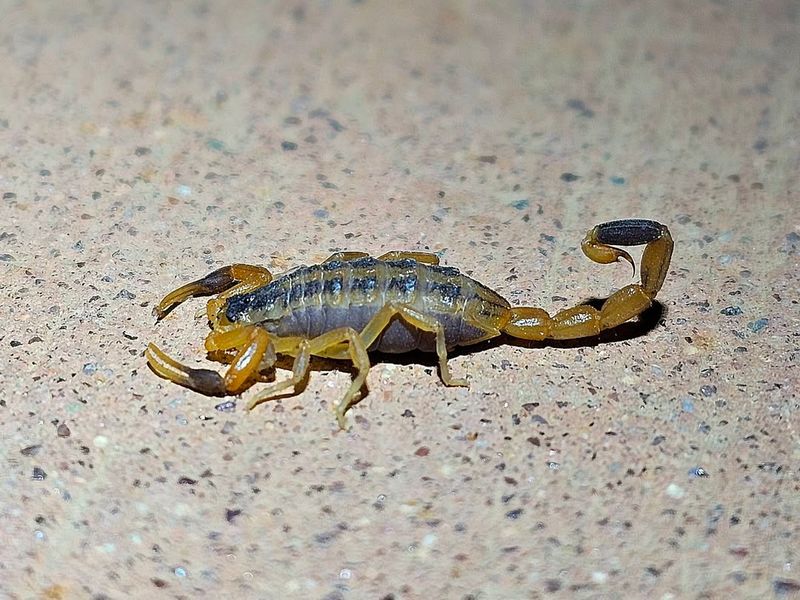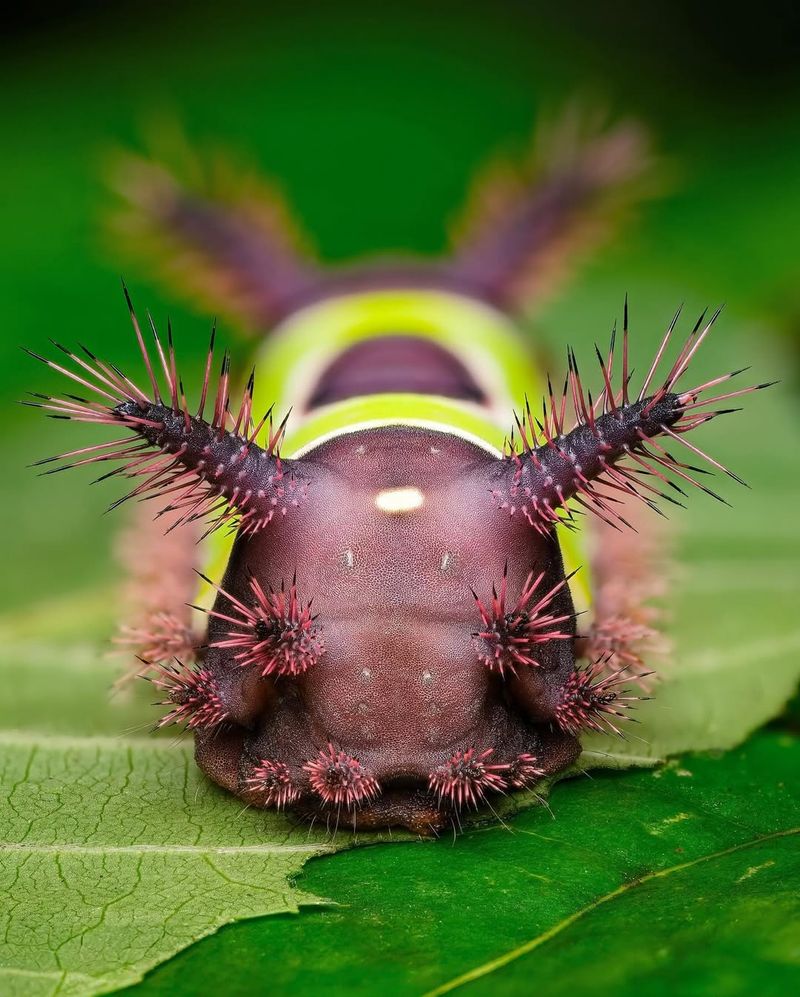Don’t let Maryland’s calm woods and quiet shores fool you—some of its residents sting, bite, and mean business. While most are more afraid of you than you are of them, a surprise encounter can turn nasty in a heartbeat.
So keep your eyes peeled and your shoes on tight. These eight venomous critters are small but mighty.
1. Copperhead Snake
With hourglass-shaped bands running down its back, the copperhead is Maryland’s most common venomous snake. You’ll find them sunbathing on rocky hillsides or hiding under logs in wooded areas throughout the state.
Their venom isn’t usually deadly to humans, but a bite causes intense pain and swelling. Always watch where you step when hiking, and never try to handle one if you spot it. If bitten, stay calm and get medical help immediately.
2. Timber Rattlesnake
Listen carefully when exploring Maryland’s mountains—that distinctive rattle warns you’re too close to a timber rattlesnake. Once common across the state, these snakes now live mainly in western Maryland’s rocky ridges and remote forests.
Timber rattlers prefer to avoid humans and will usually rattle before striking. Their venom is potent and requires immediate medical attention. Give them plenty of space if you encounter one, and back away slowly without sudden movements.
3. Black Widow Spider
That shiny black spider with a red hourglass on her belly isn’t just creepy—she’s dangerous. Female black widows hide in dark corners of sheds, garages, and woodpiles across Maryland, waiting for prey to stumble into their messy webs.
Males are harmless, but females pack a neurotoxic punch. Bites cause severe muscle cramps, nausea, and breathing problems. Wear gloves when reaching into dark spaces, and shake out shoes before wearing them outside.
4. Brown Recluse Spider
Spotting the violin-shaped mark on this spider’s back could save you from a nasty bite. Brown recluses aren’t native to Maryland but occasionally hitchhike here in boxes or furniture from other states.
True to their name, they’re shy and bite only when trapped against skin. Their venom destroys tissue, creating wounds that take months to heal. Check cardboard boxes from storage, and don’t walk barefoot in basements or attics where they might hide.
5. Yellow Jacket Wasp
Unlike honeybees, yellow jackets can sting multiple times and they’re not afraid to do it. These aggressive wasps build paper nests underground or in wall voids, and they become especially cranky in late summer when defending their colonies.
Their stings inject venom that causes burning pain and swelling. For people with allergies, stings can trigger life-threatening reactions. Avoid sweet drinks outdoors, and never swat at them—quick movements make them more aggressive.
6. Bald-Faced Hornet
Don’t let the name fool you—bald-faced hornets are actually wasps with serious attitudes. They build massive gray paper nests high in trees and will swarm anyone who gets too close, stinging repeatedly to protect their home.
Each sting delivers venom that causes immediate pain and allergic reactions in sensitive people. Stay at least 10 feet away from their football-sized nests. If you accidentally disturb one, run in a straight line and seek shelter quickly indoors.
7. Striped Bark Scorpion
Yes, Maryland has scorpions! The striped bark scorpion is the only species found this far north, typically hiding under loose bark or rocks in southern Maryland counties.
While rare, their stings feel like bee stings and cause localized pain and swelling. Most people experience only minor symptoms, but children and elderly folks should seek medical evaluation. Check camping gear before packing it away, and shake out sleeping bags before climbing in for the night.
8. Saddleback Caterpillar
Looking like a tiny toxic pillow, the saddleback caterpillar sports a brown saddle on its green body surrounded by venomous spines. You’ll find them munching on leaves of oaks, maples, and garden plants throughout Maryland’s warmer months.
Brushing against their spines triggers instant burning pain, redness, and nausea. The venom can cause reactions lasting for days. Never touch fuzzy caterpillars, no matter how interesting they look, and teach children to admire them from a safe distance.

